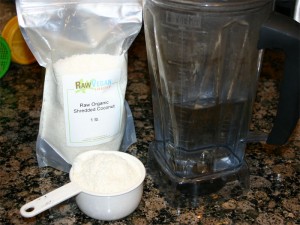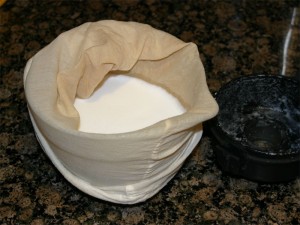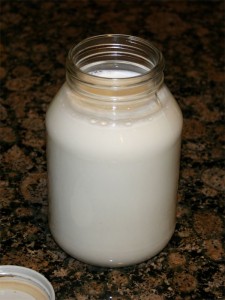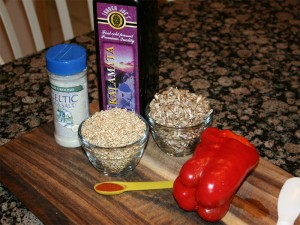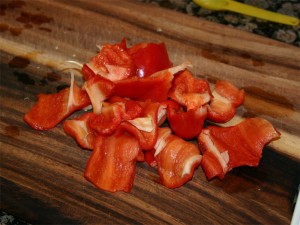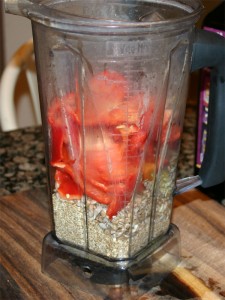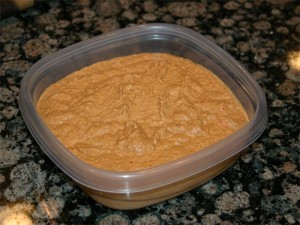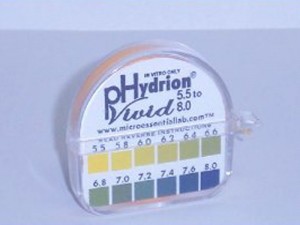Ok, I’ve read the book but still haven’t seen the movie, I doubt if I’m missing anything! The Tree of Life 21-day+ program, as outlined in Dr. Gabriel Cousens’s book There is a cure for diabetes, is a long read just to see that all the people that he scientifically studied (in this small study) showed a complete reversal of their diabetes symptoms in a matter of days by switching to a raw food, nutrient dense foods and a stress free lifestyle. This is a book that anyone looking to heal (themselves) from some chronic condition should read. Can’t help but think that if people measure the correct things, they’d probably see a huge improvement in other diseases, when switching to this lifestyle, that reduce your quality of life.
The concept is really simple and, as it turns out, the simplest things are quite often the items that are overlooked. Who would have thought that you could heal the body by eating raw foods? Or, better yet, who thinks of their food as medicine? Oh, hey, it was thought of a long time ago! Turns out Hippocrates made the statement hundreds of years ago so it must be old news:
Let your food be your medicine, and your medicine be your food.
But, what good could a statement like that do in a world that relies on scientific evidence as proof that food could work as medicine?
Ok, now for what I find most interesting about the book. It got me thinking about the fallacies of current experiments that look to find what might be useful for healing some condition. Specifically, when you conduct an experiment, you have a control environment and the same environment that you introduce the change into so that you can measure some change over time. The starting premise is that the control environment is ‘normal’ and the new environment will become either ‘healthier’ or ‘sicker’ or no change. What if the ‘normal’ control environment is one that is currently struggling right at the point of being sick, but not quite there and then when the scientist introduces something, it’s actually a poison to force the body to react rather than helping the body heal.
My thinking reflects upon what’s ‘normal’.
Let’s see if I can explain this differently. If you where a pristine green forest well watered and lush, you’d expect that lightening would have a hard time catching hold. Likewise, if the water runs out and the ground gets hard, any little strike of lightening will cause a major fire. Now, what if every forest has some form of fire burning in it and the doctors say – forest fires are a normal condition so we’re going to consider that our ‘control’. Then, they experiment with lighting small fires to see if they can starve the larger fires our help them die down.
That make sense? It seems the doctors have taken for granted that fires are always burning and they light more. But when Dr. Cousen’s looks at it he says fires do not burn in forests that are well watered and the soil is lush! His take is – rather than starting another fire, let’s water and work the soil.
This whole concept should shed a new light on scientific experiments where both the control and the subjects are both battling issues and when the doctors introduce little changes and look to measure success, they can’t see the any difference because the original problems are already so huge!
Let’s look at some details:
One of my favorites comes in the introduction of the book.
Only one question is left to the reader: Do you love yourself and the planet enough to want to heal yourself of diabetes and help the world switch from the Culture of Death, which is the ultimate cause of diabetes, to the Culture of Life, which brings love, peace, abundance, and health to the planet?
This is his last statement before the book begins. It is clear that he sees Diabetes as a choice. You can either continue to stroke the fire of Diabetes or you can change your lifestyle and see it melt away. After reading the book, I believe he’s adequately supported his point.
Any long term reader of this blog probably already has a good idea about how I understand what cooking does to food. I posted Heat Changes Molecules a long time ago, which stated what the good doctor says, yet, differently. I like how he’s summed it up:
When you cook food, according to the Max Planck Institute, you coagulate 50 percent of the food’s protein. Other research shows that 70-90 percent of the vitamins and minerals and up to 100 percent of phytonutrients are destroyed when food is cooked. Processing, cooking, pasteurization, and irradiation are all food handling methods that destroy the anti-diabetogenic qualities of our foods given to us in their natural state.
I don’t think I could have said it as well and I’m looking forward to digging up more research about this.
Here’s a quote of a quote:
Enzymes are substances that make life possible. No mineral, vitamin, or hormone can do any work without enzymes. They are the manual workers that build the body from proteins, carbohydrates, and fats. The body may have the raw building materials, but without the workers, it cannot begin.
This quote comes from Edward Howell, MD. A page later, the good doctor writes:
We need again to distinguish between cooked, saturated, and animal fats, versus raw fats with their natural high lipase content, such as we see in the indigenous Eskimo diet, along with cold-pressed unrefined olive oil, avocado, as well as predigested raw nuts and seeds soaked overnight, and even sprouted grains, which are healthy sources of fat. Even raw animal fat did not seem as strongly associated with the onset of chronic disease, but eating the same diet cooked and without enzymes because they were destroyed with cooking could be associated with the enzyme deficiency that cooking creates. It could also be explained by changing fats from cis to trans. More likely it is both. A low lipase enzyme level in the body is also connected to increased obesity. Enzyme research summarized by Miehlke and colleagues showed that artery obstruction was successfully treated and improved through high enzyme intake between meals, and it didn’t seem to matter whether it was through the enzymes in the food, or taken exogenously through supplementation. Dr. Edward Howell’s work with the Eskimos showed that they lived a disease-free life with a high-enzyme diet, rich with raw flesh foods (particularly blubber). Diabetes and degenerative diseases only became common when Eskimos began cooking their good and consuming depleted, refined carbohydrates and processed foods, both effected by encroachment of Western culture. The cooking destroys enzymes in the raw fat and in the raw meat. According to Dr. Howell in Food Enzymes for Health and Longevity, through the introduction of cooking, the Eskimos have become one of the most unhealthy cultures.
Maybe there really is something to NOT cooking food – even animal flesh!
When you finally get to the point where he talks about his 21 day+ program, it opens like this:
The first principle of the Tree of Life 21-Day+ Program to heal diabetes naturally is a prudent diet that we call the Culture of Life anti-diabetogenic diet: organic, plant-source only, live (raw) food, relatively high complex carbohydrate, 15-20 percent (low to moderate) plant-based fats, moderate protein, low glycemic index, low insulin index, high minerals, no refined carbohydrate (especially white flour and white sugar), high fiber, moderate caloric intake, and prepared with love.
He goes into this in greater detail, but that is the main point. They are not cooking their foods and they are going out of their way to find nutrient dense foods that accelerate the healing process.
Ultimately, as he’s stated and I’ve quoted above, it’s your choice; “Do you love yourself and the planet enough to want to heal yourself of diabetes”? If so, you’ll be open to Dr. Gabriel Cousens words and you’ll take them to heart.
There’s more in the book that I’d like to share, but I’ll just have to make it another posting.
Have a great day!
Other posts:

